How to Make a Bog Garden
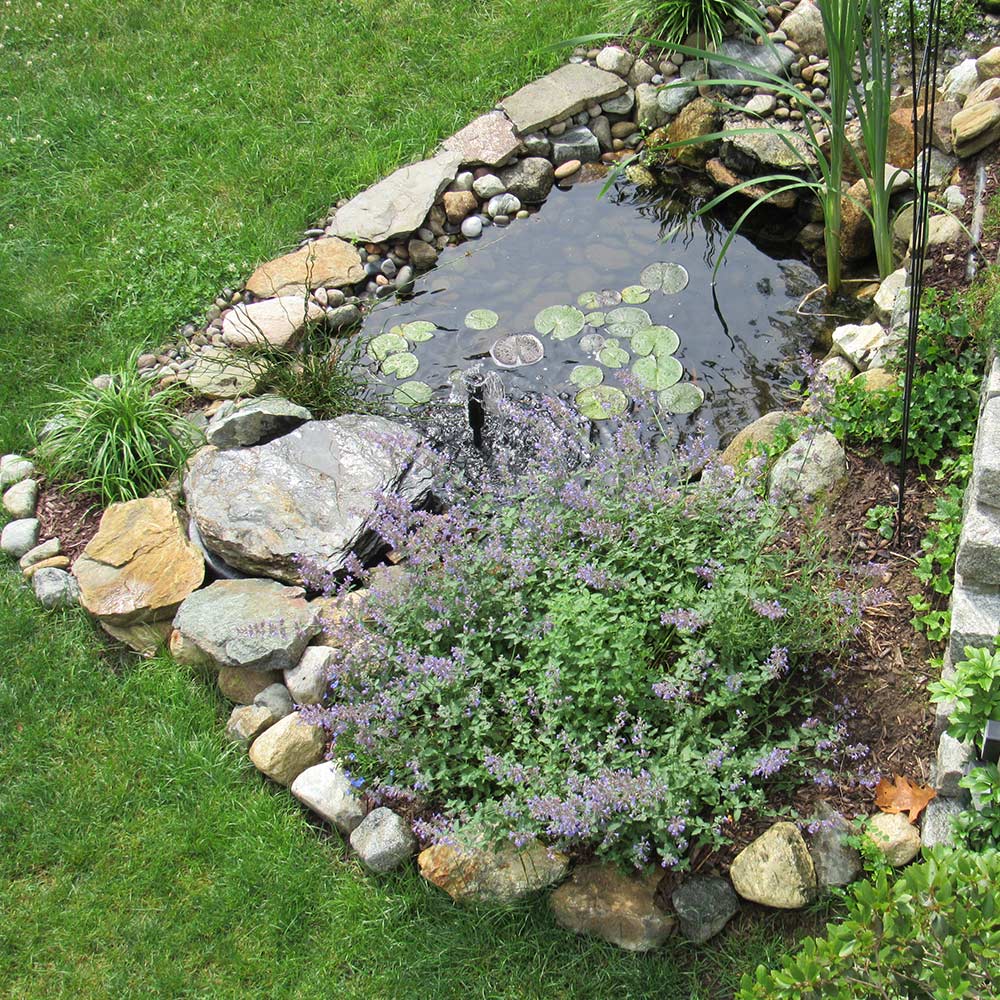
Published September 5, 2023
A bog garden is a damp area where moisture-loving plants grow. In nature, bog gardens can form around lakes, streams or ponds or in low-lying, waterlogged areas. When you learn how to create a bog garden in your own yard or landscape, you can grow water-loving plants, attract wildlife and turn an unused spot into an attractive site.
Difficulty:
Beginner
Duration:
Over 1 day
Table of Contents
How to Choose a Site for a Bog Garden
Dig a Hole and Add a Liner
Refill the Hole and Trim the Liner
Add and Maintain the Bog Garden Plants
How to Make a Bog Garden in a Container
Bog Garden Plants
How to Choose a Site for a Bog Garden

Start by choosing a naturally wet site to make a bog garden. Because shallow bog gardens dry out faster than big ones, make yours at least 2 1/2-feet deep. If you want it to look natural, don’t make the shape perfectly round.
If possible, put the garden so you can see and enjoy it from inside your home.
Use a garden hose, paint or a rope to form an outline on the site you select. Ideally, it will be away from overhanging trees and in a spot that gets at least six hours of sun a day. Some bog plants like shade, so if part of the garden will be shaded, that’s fine.
Dig a Hole and Add a Liner

Use a shovel to dig a hole or trench for the garden. Put the soil you’re excavating on a tarp to protect your lawn and other plants. Make the walls of your bog garden slope slightly outward to help keep them from caving in.
Line the excavated area with a solid sheet of thick polythene or a flexible pond liner and use a garden fork to make some holes it it. Put them on the bottom of the liner or around the edges of the liner about a foot below the surface of the soil. You don’t want the water to sit in the liner, like a pond, or the crowns of the plants to be submerged. You’re just creating a place where the soil will stay wet.
Put a layer of gravel in the liner, so the water can seep through any drainage holes at the bottom, but the soil won’t clog them.
Refill the Hole and Trim the Liner
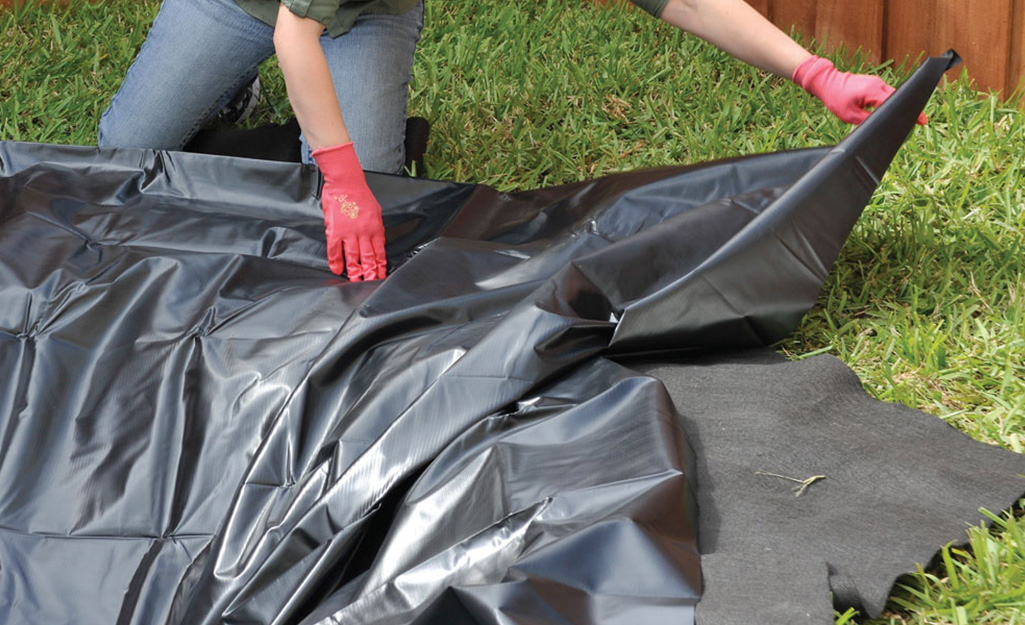
Fill the hole with a mixture of half of the excavated soil and half compost. Tamp it down, so the liner will settle. Trim the edges of the liner flush with the surrounding soil and water the bog garden thoroughly. Let the garden sit for at least a week or up to a month before planting. Add more of the soil and compost mixture to the bog garden, if needed, so it stays level with the surrounding area.
Add and Maintain the Bog Garden Plants
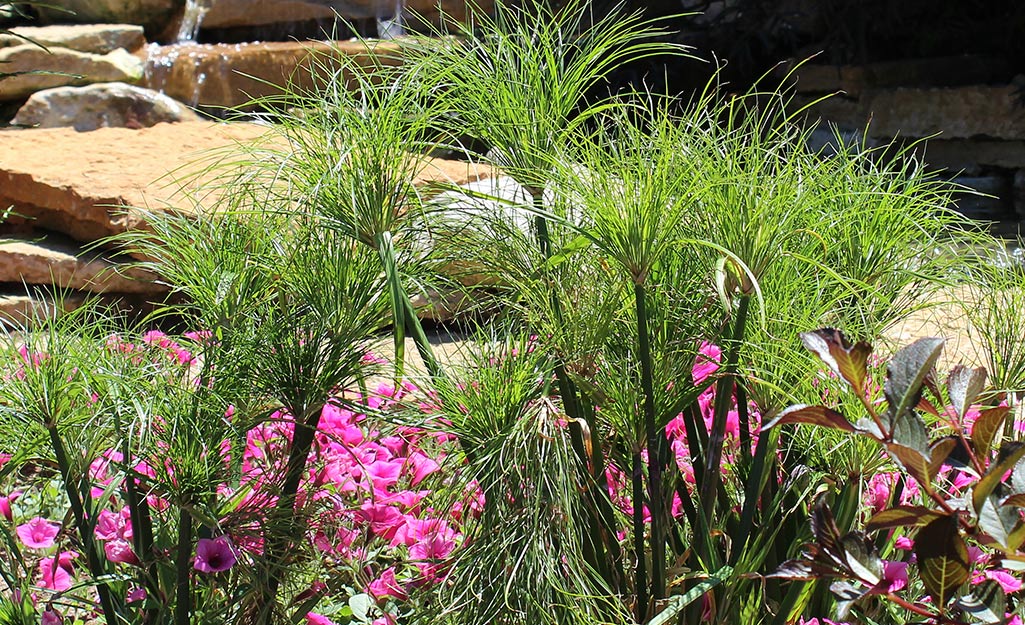
Plant the bog garden with moisture-loving plants, sometimes called marginal pond plants or water plants, and water them in. Keep them watered until they’re established. Never let the bog garden dry out.
In the winter, mulch the garden with oak leaves or pine straw, which may help increase the soil’s acidity as they decompose. Bog plants like acidic soil, so the mulch can be left in the garden to eventually break down. Replenish it when needed.
Top dress the bog garden from time to time with compost and remove any weeds that pop up. Most weeds don’t like constantly wet soil, so they shouldn’t be a big problem.
Tip: Put a soaker hose on top of the bog garden and hide it under some mulch. Use it as needed to keep the soil moist.
How to Make a Bog Garden in a Container

If you don’t have enough room in your yard for a bog garden, make one in a container instead. Use a large plastic pot, a child’s plastic swimming pool or other big, wide container. If the container has drainage holes, add a liner to keep the soil from washing out. If it lacks drainage holes, make some. Just don’t let the plants stand in water.
Put the container where it will get about six hours of sun a day. Move it before you fill it, so it won’t be too heavy to handle later. Add a layer of gravel and top it with half garden soil and half compost. Water until the planting media is saturated.
Let the container sit for at least a week and keep the soil wet before you plant the bog plants. Check them often and water as needed.
Bog Garden Plants
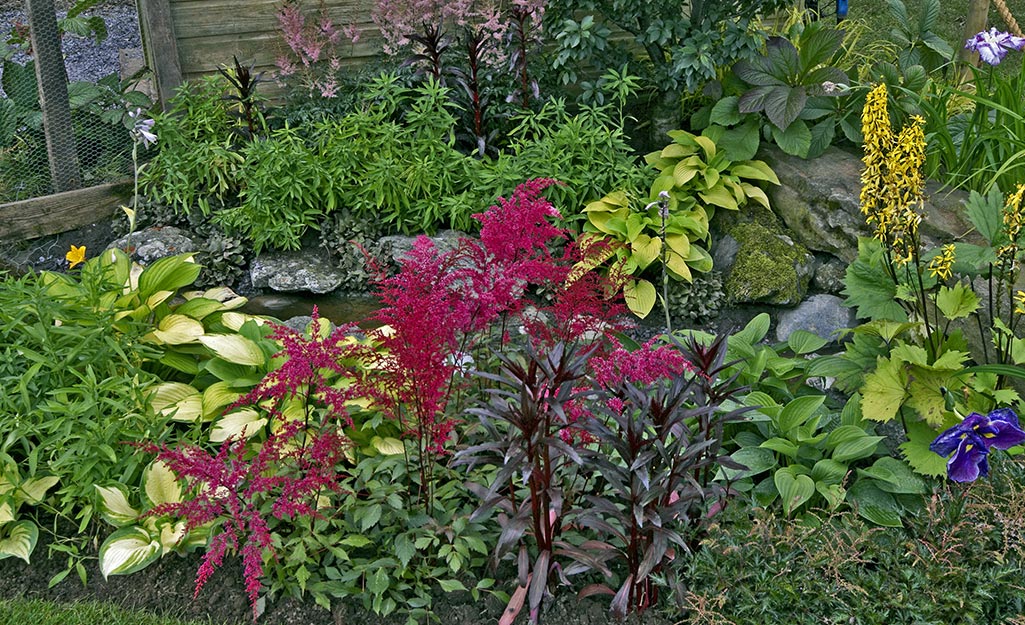
Choose plants for your bog garden that like moist, acidic soil, but remember that most plants don’t like to stand in water, which can rot their roots. Also, some plants are not hardy in areas with cold winters, so read their tags or labels if you want plants that will come back when left outdoors year-round. Try these bog garden plants:
- Marsh marigold: These pretty plants start opening their bright yellow flowers in early spring. Giant marsh marigolds can grow up to three feet tall.
- Flag iris: Look for flag irises with purple, white, yellow or blue blooms. These are perennials that form clumps, so you can divide them after the flowers are finished. They typically bloom from late spring into early summer.
- Turtlehead plant, also called chelone: Its flowers look like turtle heads and come in white or pink. They open in August or September and prefer dappled shade to shade.
- Cardinal flower: Hummingbirds love the red flower spikes on native cardinal flowers, which grow in shade. The plants can grow to six feet tall.
- Giant rhubarb: This perennial show-stopper needs lots of space, so consider using it as a specimen plant or it may take over. It has huge, prickly leaves, so handle it carefully or wear garden gloves.
- Astilbe: Shade-loving astilbes are slow-growing perennials that flower from late spring to summer.
- Leopard plant: Give these plants a shaded spot in a bog garden. Their big leaves are attractive even after the yellow-gold blooms fade.
- Monkey flower, or Mimulus: Monkey flowers like a partly sunny garden spot and are available in bicolors and solid colors.
- Bee balm, or Monarda: Bees will visit purple, pink or red Monarda, as its name suggests, so don’t plant it if you or someone who will be around your bog garden is allergic to bees.
- Primrose: Many species of primroses can grow in damp soil. Look for flowers in shades of pink, yellow, orange and red.
- Dwarf Egyptian papyrus: This is an easy-to-grow foliage plant. Keep the crown of the plants out of the water and above the level of the soil. In cold-winter areas, pot up the plants and bring them inside until the weather is reliably warm again.
- Sedge Carex elata: This sedge looks like an ornamental grass and prefers part-shade in a bog garden. It can tolerate water up to 2 or 3 inches deep and is hardy in Zones 5-8.
Tips for Bog Garden Plants
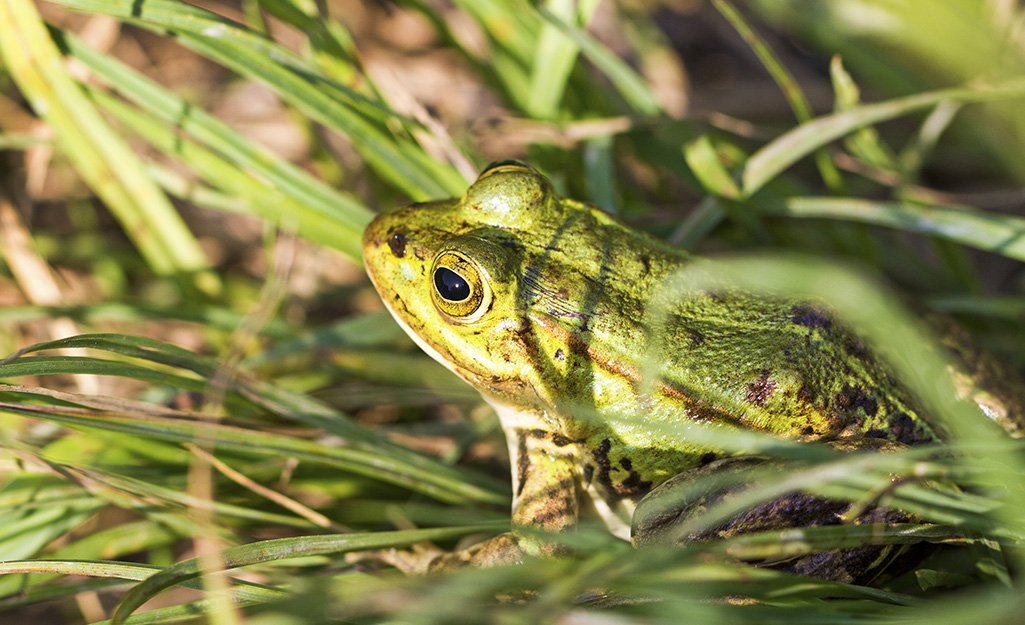
- Mix the types of plants you use. Grow short and tall plants, such as a ground cover like creeping jenny with flag irises or other tall plants. Read plant tags or labels to know how big the plants will become.
- Bog gardens attract insects like dragonflies and other creatures. Watching wildlife visit your bog garden is part of the fun. Attract butterflies, hummingbirds and other pollinators with nectar-rich plants that prefer moist soil.
- Avoid invasive plants that will crowd out the other plants in the bog garden. If you’re not sure if a plant is invasive in your area, ask your local county extension agent.
- Use plants that bloom in succession, so you’ll always have something in flower.
- Put a few stepping stones around the garden, so you won’t sink into the wet soil when you’re pruning or maintaining the plants.
- There are no rules for a bog garden, but you may want to put tall plants near the back, if you’ll view it primarily from one side.
Installing a bog garden is a great way to improve unused yard space. It attracts bees, butterflies, dragonflies and frogs, adding to the natural beauty of your outdoor space. With this step-by-step guide you can get started building your own bog garden today.
Use The Home Depot Mobile App to locate products and check inventory. We’ll take you to the exact aisle and bay.























